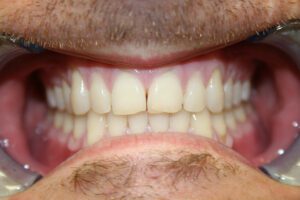
Nanodentistry is the future of dentistry in which every procedure will be performed using equipment and devices based on nanotechnology. Using a combination of nanomedicine and biotechnology, it will become possible to replace teeth in a single procedure with ultimate precision and correctness. All diagnoses and treatments will be given using nanoscale-structured materials and nanorobots. These materials and devices will have the ability to correctly diagnose a problem and provide solution in the shortest possible time. Likelihood of providing almost perfect oral health will become evident which will be further promoted by using tissue engineering and biotechnology. Dentists collectively believe that 10 to 20 years are still required to make this happen.
Nanodentistry will have an effect on the way local anesthesia is induced in patients undergoing painful surgery or treatment. Micrometer sized particles will be used to reach down to the exact location of surgery where they will induce local anesthesia. All this will be controlled with the help of the nanocomputer operated by the dentist. Tooth straightening and procedures involving restorative dentistry such as crown placement and bridgework will also be performed using appropriate nanorobots. People who wish to improve their smile will have a chance to change the appearance of their teeth with the help of covalently bonded artificial materials which will serve as tooth enamel.
Nanotechnology will make it possible to construct materials which are long-lasting and very close to nature. Nanoproducts made for various dental procedures will have more hardness, elasticity and strength than the ones which are in practice today. Furthermore, they will have better appearance in terms of color, texture and aesthetic appeal. And most important of all they will perform much better than today’s dental appliances and materials and last for many years to come.
Nanodentistry is sometimes referred to as robotic dentistry pertaining to the use of nanorobots. Dentirobots will be constructed which will have the ability of destroying harmful bacteria. Such a treatment would be provided on a daily basis which will greatly decrease the chances of tooth decay, formation of cavities and gum disease. The various treatment options which will be available in nanodentistry include orthodontics, tooth repair, treatment for sensitivity to temperature, cosmetic procedures, and tooth renaturalization. Tooth durability may also be improved using biocompatible materials such as sapphire and diamond.
It will also become possible to prevent periodontal disease and other oral complications with nanodentistry. The devices will make it easier to diagnose the smallest of problems at the earliest and the dentists will be able to devise a treatment to counter the effects of a particular disease or condition. The fact that nanodevices cannot be seen make them even more powerful. However, some scientists believe that other than providing unlimited benefits, these devices can also bring dangers due to mishandling or misuse. But again everything has its pros and cons and if we look at nanodentistry we find that its pros far outweigh the cons and therefore we should be looking forward to its emergence and popularity.

